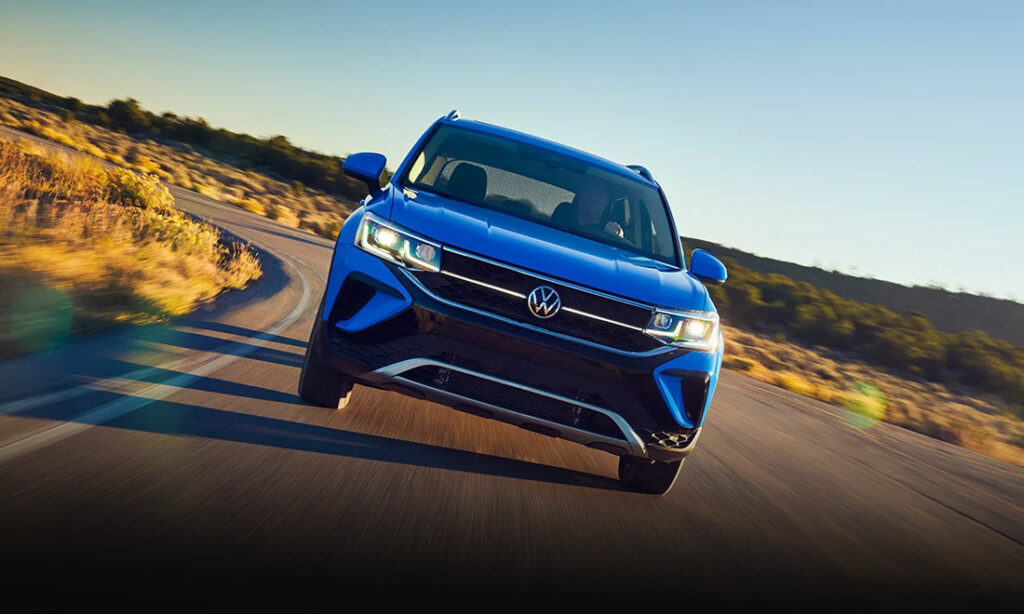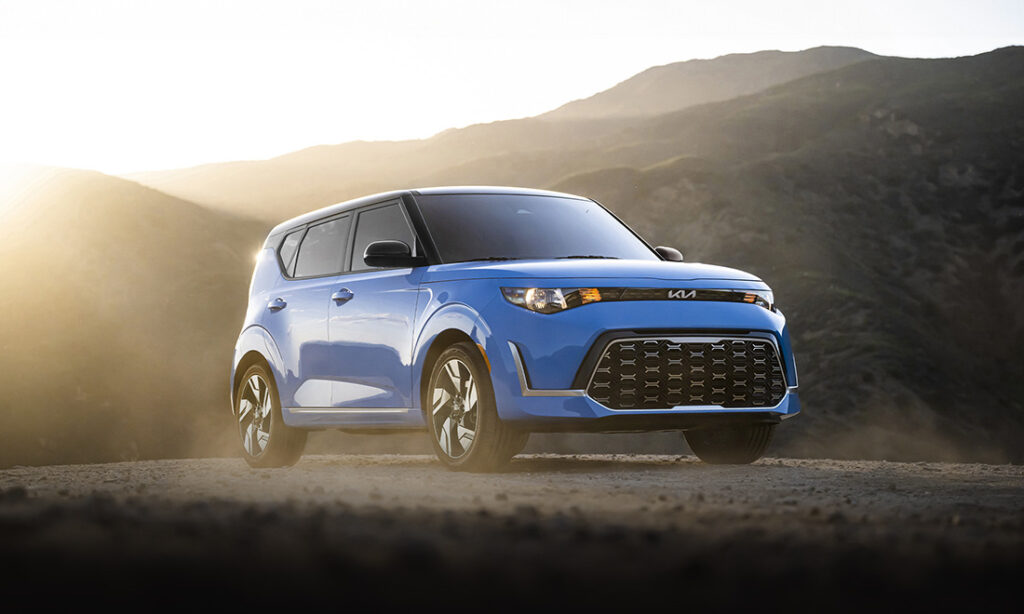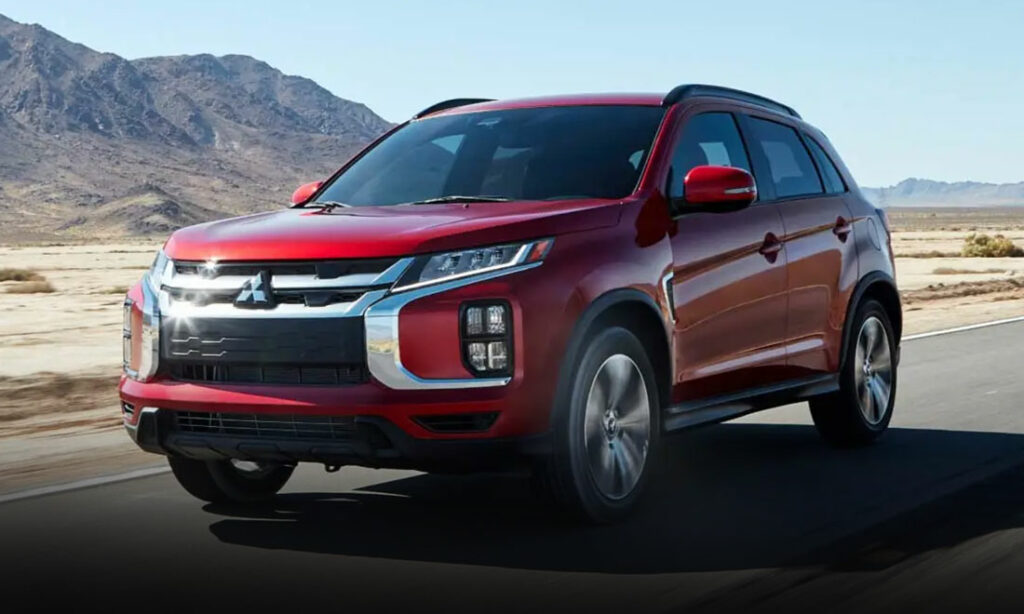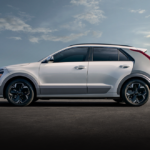2019 Atlas versus 2020 Tiguan
Is bigger necessarily better when it comes to Volkswagens? We compare the Atlas and Tiguan to find out.
Intro – Giving “the People” the Car They Want
With the passing of the Beetle this year, the question becomes, does Volkswagen still make a proper version of “the people’s car”? If by that we mean what people are currently looking for in a vehicle, something that satisfies a need for utility, comfort, and practicality, then yes. Both the VW Tiguan and the new 3rd-row Atlas are indeed what the people want, solid, easy to live with vehicles that aren’t sedans.

This article aims to answer three principle questions about the small and mid-size SUVs in Volkswagen’s line-up. First, which of the two head-to-head proves the better SUV for your dollar, two, how do they each compare to their in-segment competition, and three, why the tension between the first two answers affects our final recommendation.
A fourth question ought to be which has the better name? Here the Tiguan wins hands down. The portmanteau of tiger and iguana beats pretty much all other car names out there. It’s better than Phantom, Testarossa, or even Raptor. It easily beats out a burly looking SUV named after the Greek god who held the world on his shoulders. Mainly the Tiguan wins because all those names sound tough and cool and Tiguan sounds deeply weird.
Specs – Keeping Things Basic
Both the Tiguan and the Atlas carry a 2.0-liter turbo inline 4-cylinder as their base engine. In the Tiguan it puts out 184hp and 221 lb. ft. of torque and in the Atlas 235hps and 258 lb. ft. The bigger difference is, for the Tiguan that’s the only engine available. The Atlas, however, can be upgraded to a 3.6-liter V-6 for a much-needed boost in power. The V-6 also helps the Atlas get to its max towing capacity of 5,000 lbs. Both vehicles come with an 8-speed automatic transmission. All trims of both the Tiguan and Atlas are available with Volkswagen’s 4motion AWD.
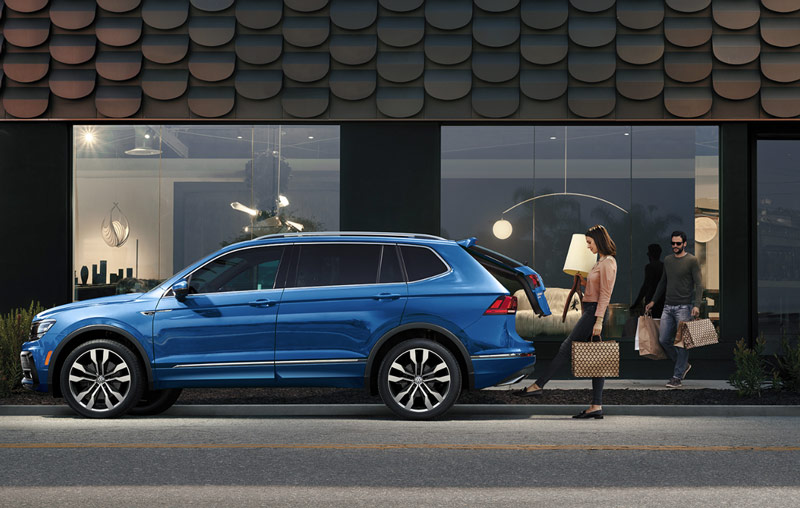
Probably the most significant difference between the Tiguan and Atlas is also the most obvious, their footprints. The Atlas runs 198” in length, 78” in width, and 70” in height. The little brother Tiguan is 185” in length, 72” in width, and 66” in height. Those extra inches for the Atlas start to really matter once we get to things like handling and interior comfort.
One clear leg up for the Tiguan is the superior gas mileage. The Tig nets approximately 30 mpg on the highway and 22 in the city for a combined rating of around 25 mpg. That puts it in the upper tier for non-hybrid compact SUV/crossovers. The Atlas gets 17 city and 23 hwy, which puts it solidly mid-pack.
Performance – (Be)Calm Yourself
As you might have guessed from the numbers above the Tiguan isn’t exactly a speed demon. The 2.0-liter is adequate but not much more than that. The turbo lag doesn’t help either. Combined with the 8-speed transmission being a little reluctant to downshift, the Tiguan feels distinctly poky off the line and in passing situations.
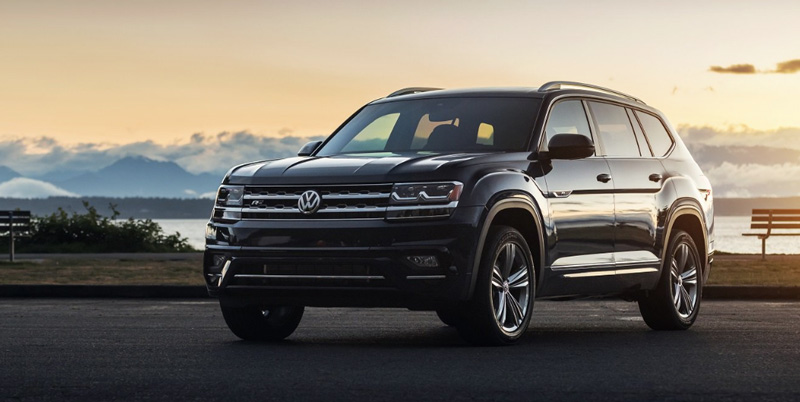
Adding the 3.6 to the Atlas doesn’t get you a lot better. With the additional weight, the Atlas can still feel a little sluggish. There are plenty reasons to prefer the Atlas over other SUVs, but acceleration wouldn’t be one of them. Driving the exceedingly average Atlas, we couldn’t help but be reminded of the much peppier Ford Explorer ST and its super smooth 10-speed automatic.
Both vehicles offer a sedate and smooth ride. The cabin is quiet, and potholes seem to vanish beneath the wheels. Lean while cornering is minimal for both, though a little more noticeable in the larger Atlas. Though they’re not quite to luxury levels, the Atlas and Tiguan achieve high marks for comfortable daily driving.
Interior and Tech – Third Rows with Charm
The interior of both the Tiguan and Atlas offer nice, if not upscale, materials and design and are perfectly in line with segment competition. Cloth is standard for upholstery but can be upgraded to either leatherette or leather. Heated seats, leather steering wheel, and power-adjustable driver’s seat can also be added on.
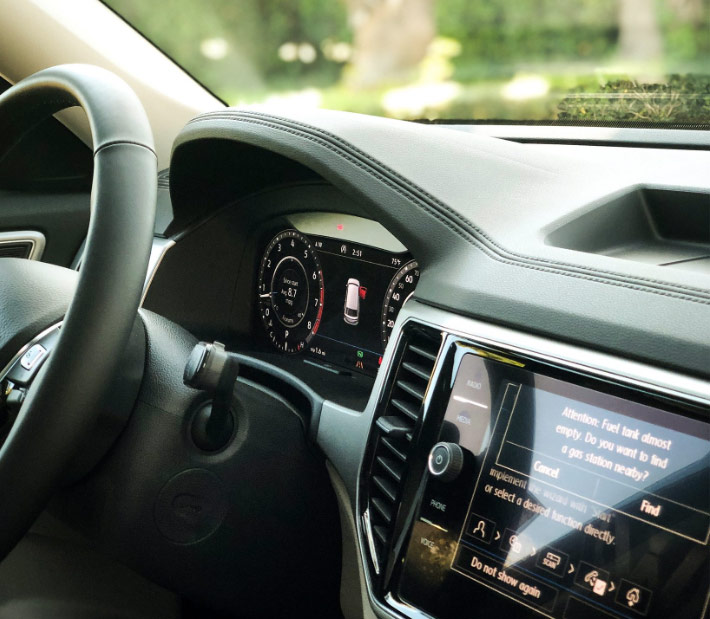
Most of the tech available in these two vehicles functions well without standing out from the crowd. Navigation, a Fender stereo, and a larger 8-inch touchscreen are among the available upgrades. Apple CarPlay and Android Auto come standard, which is nice, and the infotainment system itself is intuitive to navigate. The heads-up digital display ended up a favorite tech feature with the high-res 12.3-inch screen replacing a traditional instrument cluster.
But probably the biggest story for the interior of these VWs is the space. Both offer above average passenger and cargo room. The one real standout feature for the Tiguan is the availability of a third-row seat, unique in its class. As you might suspect, it’s really only suitable for children, mothers-in-law, and frenemies. The Tiguan’s cargo space breaks out as 12 cu. ft. with all the seats in use, 33 cu. ft. with two rows in use, and 65.7 cu. ft. at maximum. The cavernous Atlas runs 20.6 cu. ft., 55.5 cu. ft., and a 96.8 cu. ft. grand total.
Value – A Trim for Every Budget
Volkswagen has had one of the most robust warranties in the industry, offering a 6 year or 72,000 limited powertrain warranty. But that changed with the 2020 edition of the Tiguan. The Tiguan’s warranty has been downsized to a 4 year/50,000 warranty with 2 years/20,000 miles of comprehensive maintenance. We expect a similar diminution of the Atlas’ warranty once its 2020 model premiers.
Volkswagen likes their trim levels in multiples. The below breakdown skips over the incremental adjustments for the addition of 4Motion AWD ($1,300 on the Tiguan and $1,800 on the Atlas) and the V6 in the Atlas (an additional $1,400). The Atlas tops out at $48,395 with the SEL Premium including as standard the 3.6-L and 4Motion AWD.
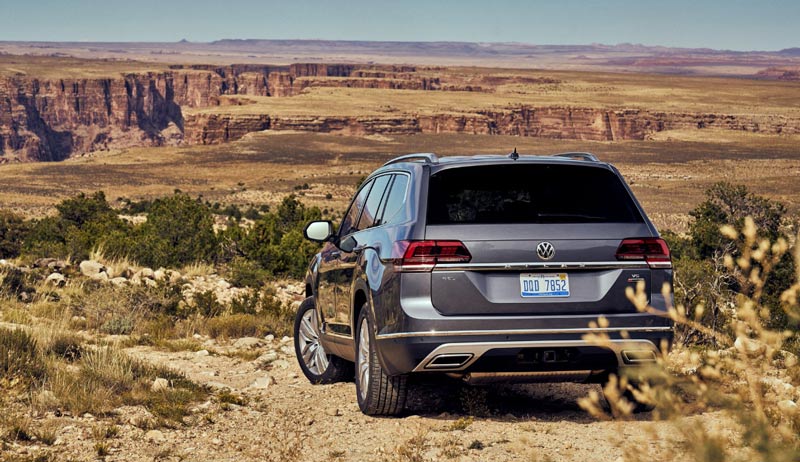
| Tiguan Trims | S | SE | SE R-Line Black | SEL | SEL Premium R-Line |
| Price | $24,945 | $27,095 | $30,295 | $32,245 | $38,795 |
| Atlas Trims | S | SE | SE Tech R-Line | SEL | SEL R-Line | SEL Premium |
| Price | $30,895 | $34,095 | $39,245 | $41,395 | $43,345 | $48,395 |
Conclusions – Go Big or Go for Something Else
What’s the trite aphorism shared at commencement speeches…ah, if you want to go fast go alone, if you want to go far go together. Never have truer words been spoken about the Volkswagen Atlas. We started with three questions to answer regarding the Tiguan and Atlas. So, here are the conclusions.
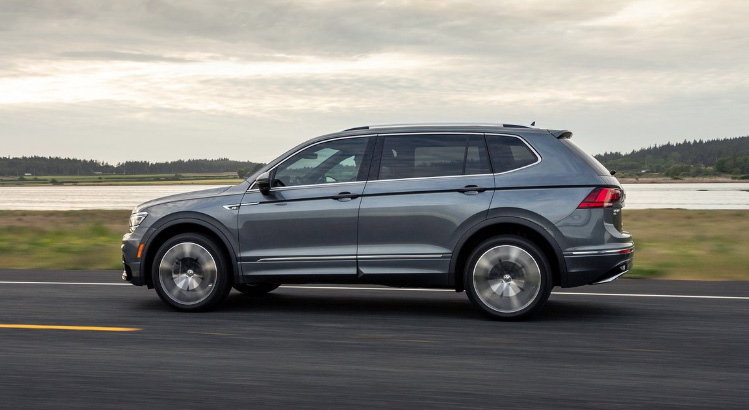
If you’re dead set on purchasing a VW as your next vehicle you’ve got to ask how much extra space (and towing capacity) is really necessary. Because the Tiguan ticks most of the same boxes as the Atlas, including a 3rd-row (though smaller to be sure) for less money. Head-to-head the Tiguan edges the Atlas in practical terms.
However, and this is a big one, when you compare the Tiguan and Atlas to their segment competition the case is reversed. The Tiguan sits solidly mid-pack, affordable, with all the requisite available tech and safety features but lacking anything to set it apart.
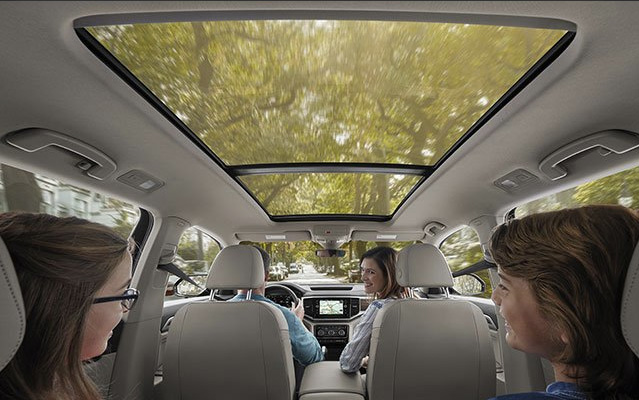
On the other hand, the Atlas acquits itself well in its respective segment. That the 3rd-row seating can easily accommodate 3 six-foot tall passengers from end-to-end is a testament to the excellent job VW did in maximizing cabin space. Matching this with a very comfortable ride and all the modern amenities, the Atlas becomes a good choice among 3rd-row SUVs.
Our overall pick then is the Atlas. Brand loyalty isn’t what it once was and when hunting for the best overall SUV the Atlas stacks up well against the likes of the Kia Sorento, Honda Pilot, and Chevy Traverse.


